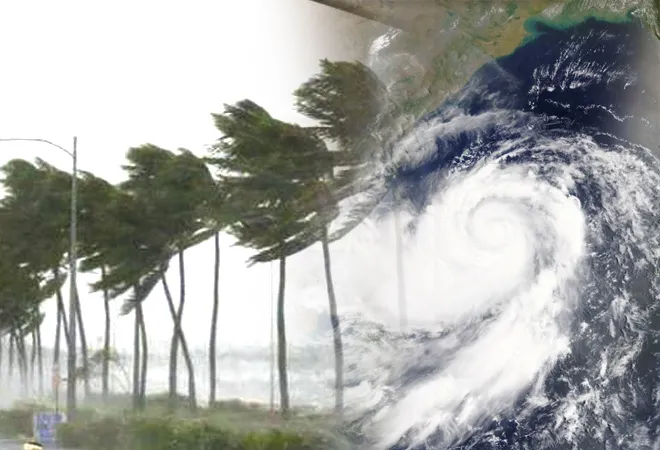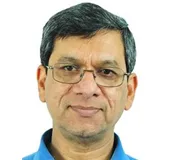
Cyclone Fani, a category 4 storm that made landfall in the state of Odisha on 3 May, was one of the worst cyclones to hit India in last two decades. Odisha’s preparedness, efficient early warning system, timely action, and well-planned large-scale evacuation strategies helped 1.2 million people move safely into nearly 4,000 cyclone shelters, thereby saving the lives of vulnerable population in the sensitive coastal region. However, a month after the cyclone, the state is still struggling to get back to normal. According to news reports, hundreds of families are still stranded in community shelters as they are not able to erect even makeshift houses. This poses important questions- Are we really ‘prepared’ for disasters? Are our systems and infrastructures equipped to withstand their impacts? Do we have the capacity to cope and bounce back?
Odisha, like other coastal states, is not a stranger to the devastating trail of extremely severe cyclones. Since the super cyclones Bob and Phalin in 1999 and 2013 respectively, the state has worked tirelessly to upgrade its disaster response. Subsequently, the state established Odisha State Disaster Management Authority (OSDMA) as the first dedicated disaster management agency in India, built 800 cyclone and flood shelters, invested in early warning systems, created a Disaster Rapid Action Force, and conducted public awareness campaigns. It is one of the few Indian states to create a disaster loss database and report its progress to meet the Sendai Framework for Disaster Risk Reduction (SFDRR) targets. Consequently, there has been a dramatic transformation from the loss of over 10,000 lives in 1999 to a mortality of 16 in 2019. However, it is not Odisha alone, earlier in 2014 during a similar Cat 4 cyclone Hudhud, Andhra Pradesh demonstrated an equally excellent evacuation strategy for millions.
Although there has been a significant reduction in the mortality rate in the coastal states, however, the number of people affected and the material consequences of the impact on physical assets have remained unchanged for major natural disasters in India.
Although there has been a significant reduction in the mortality rate in the coastal states, however, the number of people affected and impact on material consequences on physical assets have remained unchanged for major natural disasters in India.
Weeks after the cyclone Fani, clear picture has emerged of the extent of physical damage, especially to critical infrastructure. According to the first preliminary damage assessment report of the Odisha government, the cyclone has affected at least 1.51 crore people spread over 16,659 villages, damaged five lakh houses and 6,700 hospital buildings and perished 34 lakh livestock. In the district of Puri and parts of Khurda and Bhubaneshwar, the power distribution infrastructure has been totally devastated. According to government estimates, the total loss in financial terms is nearly Rs 50,000 crore. Moreover, there has been a significant threat of infections and epidemics due to the lack of potable water and functional sanitation. As severe weather events such as cyclones have become the ‘new normal’ in an increasingly climate constraint world, it is imperative for a developing country such as India to build resilient systems and retrofit existing ones in order to secure its development gains, minimise disruptions, economic losses and expedite the future response and recovery measures.
As severe weather events such as cyclones have become the ‘new normal’ in an increasingly climate constraint world, it is imperative for a developing country such as India to build resilient systems and retrofit existing ones in order to secure its development gains, minimise disruptions, economic losses and expedite the future response and recovery measures.
Integrating disaster considerations into development planning framework such as accounting for disaster impacts in zoning and master planning, adopting measures in building bye-laws and regulations, both at the national and subnational levels, will be an important step to make the infrastructure resilient to withstand the impacts of calamities.
The Model Building Byelaws 2016 of the Ministry of Housing and Urban Affairs already provides for risk classification of buildings and climate-resilient construction. However, most of the vulnerable cities in India do not comply with the guidelines. In the absence of strict regulatory enforcement framework, cities would continue to incur significant loss and damage.
As climate change is projected to precipitate the intensity and frequency of extreme events, there are significant opportunities for research into developing disaster-resilient infrastructure and dynamic policy responses. India already has an excellent institutional framework for predicting disasters. The Indian Space Research Organisation (ISRO) and National Remote Sensing Agency (NRSA) provide satellite eyes capable of high-resolution imaging of weather systems while the India Meteorological Department (IMD) carries out their real-time monitoring. The GSI maps out the landslide potential zones in all the high-risk areas and can predict tsunamis. These institutional climate capabilities should be collectively mobilised to create a comprehensive approach that could guide designing, planning and delivering on resilient infrastructure building. In addition, ensuring access to knowledge of traditional practices of resilience building and their dissemination, as well as encouraging adoption of diverse and locally appropriate techniques for vulnerable coastlines would be of critical importance. Each of these disaster events are also opportunities to collect detailed data and carry out simulations and analysis of their impact on major and critical infrastructures. Bhubaneswar has an excellent knowledge ecosystem with major institutes of national eminence, both in the city and in its neighbourhood. A well-planned ‘government-academia-industry’ collaboration to get the best learning out of such events would benefit the state as well as the country.
As climate change is projected to precipitate the intensity and frequency of extreme events, there are significant opportunities for research into developing disaster-resilient infrastructure and dynamic policy responses.
There is also an opportunity for India to learn from global best practices. Countries such as Hong Kong, China, Japan, and Korea have built a robust infrastructure over the years keeping in mind the frequent typhoons it must withstand. Vulnerable coastal states such as Odisha must draw lessons to prepare their systems to respond to a disaster effectively and gets back up on its feet rapidly.
Most importantly, a densely populated country like India must create a community level supplementary infrastructure to manage their emergency requirements of evacuation, food supply, water and sanitation, health, power supply, etc. till the centralised infrastructure services return to normal after a disaster. Non-Governmental Organisations should assist the government in helping the vulnerable communities learn its operation, maintenance, and management.
As India moves higher up the economic ladder, policy planners are expected to start working towards creating disaster resilient systems. Fani and many of the preceding cyclones impacting India have clearly shown where the focus should be now!
The views expressed above belong to the author(s). ORF research and analyses now available on Telegram! Click here to access our curated content — blogs, longforms and interviews.




 PREV
PREV




